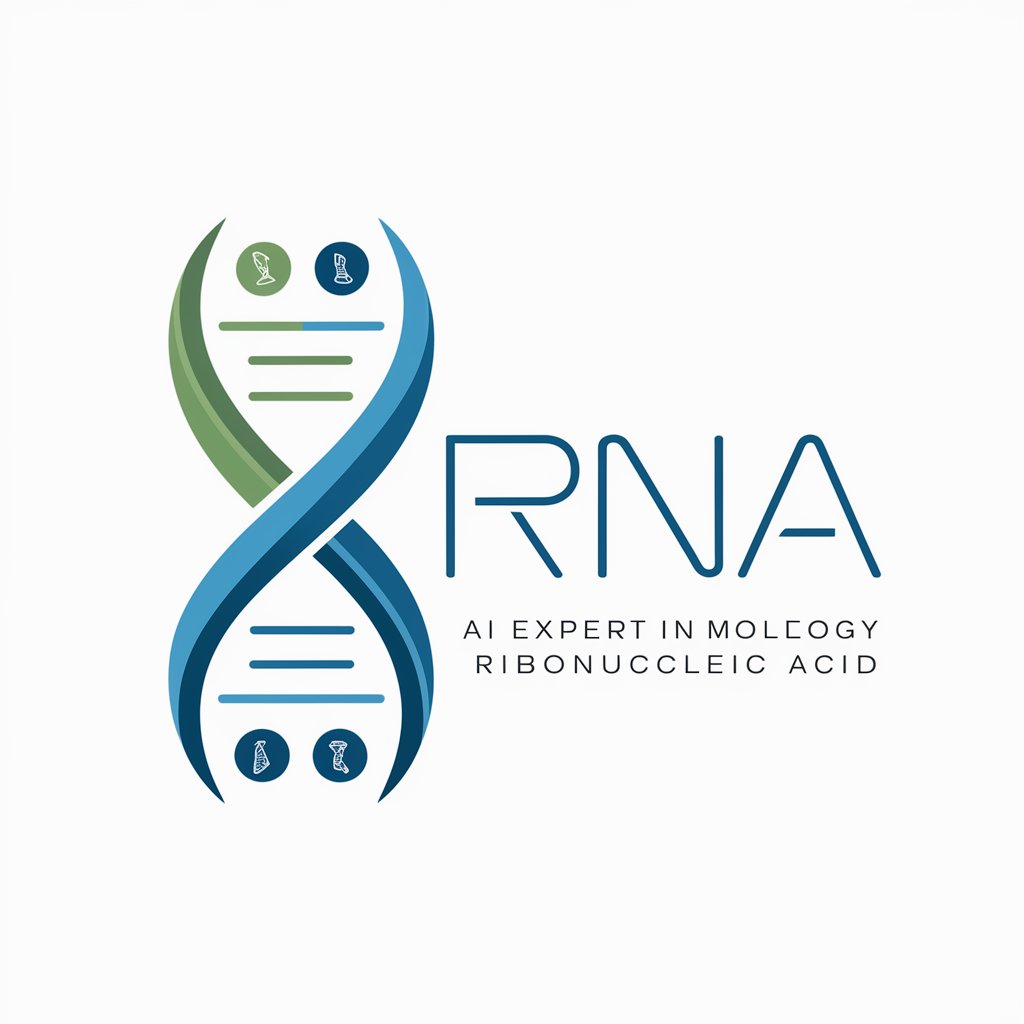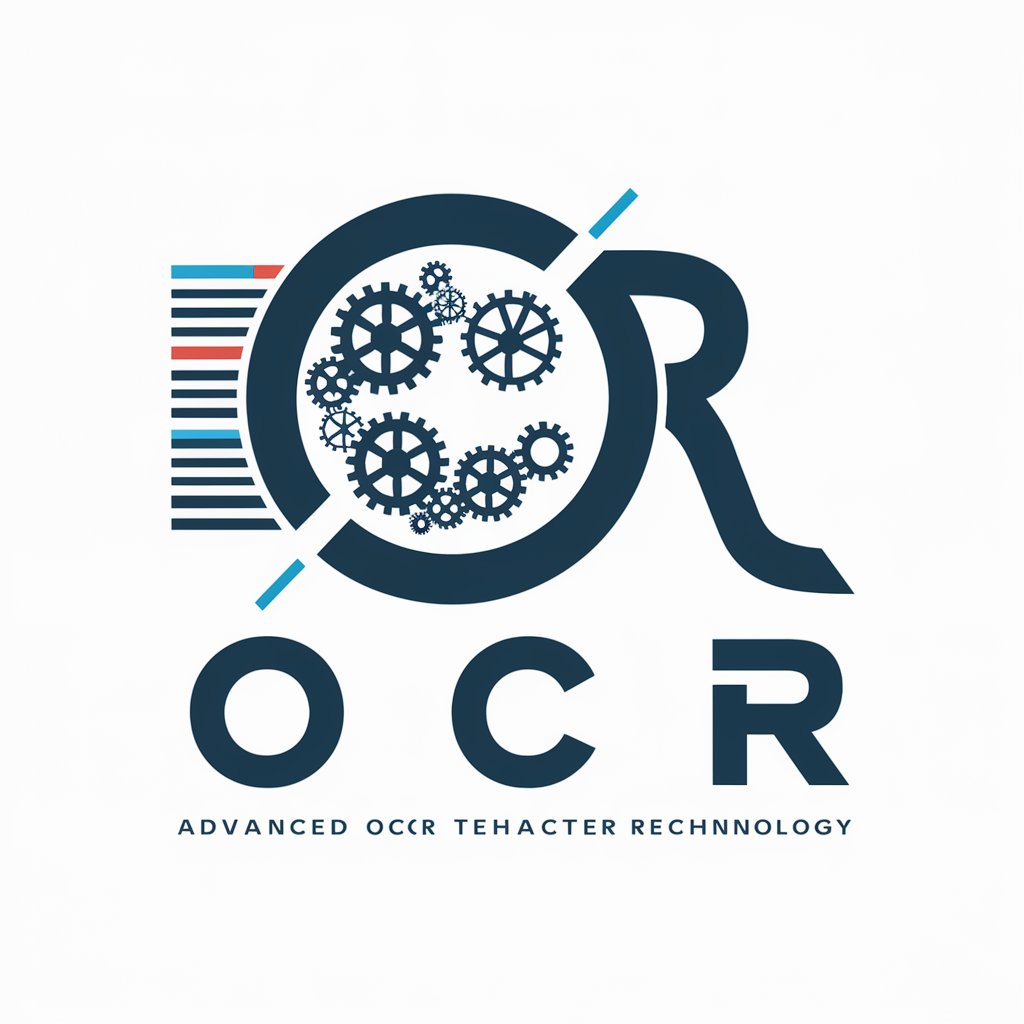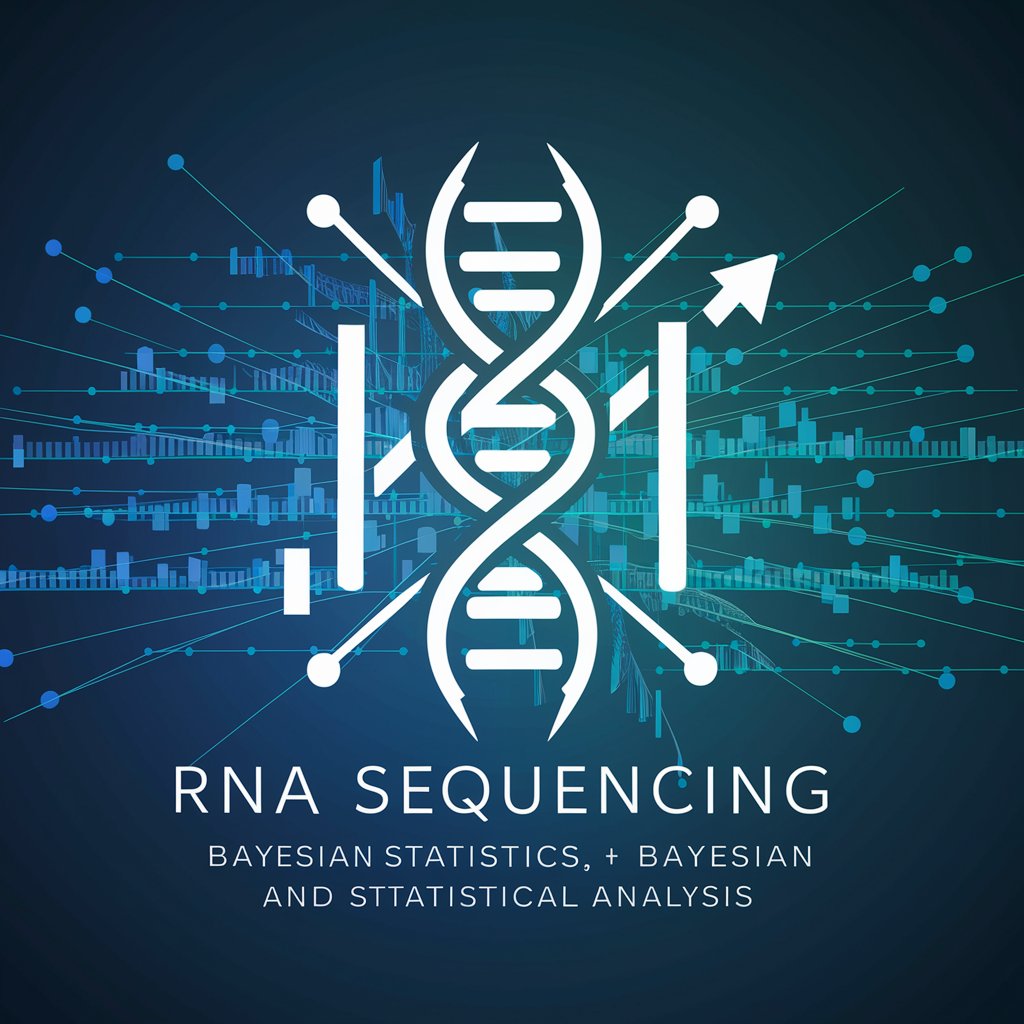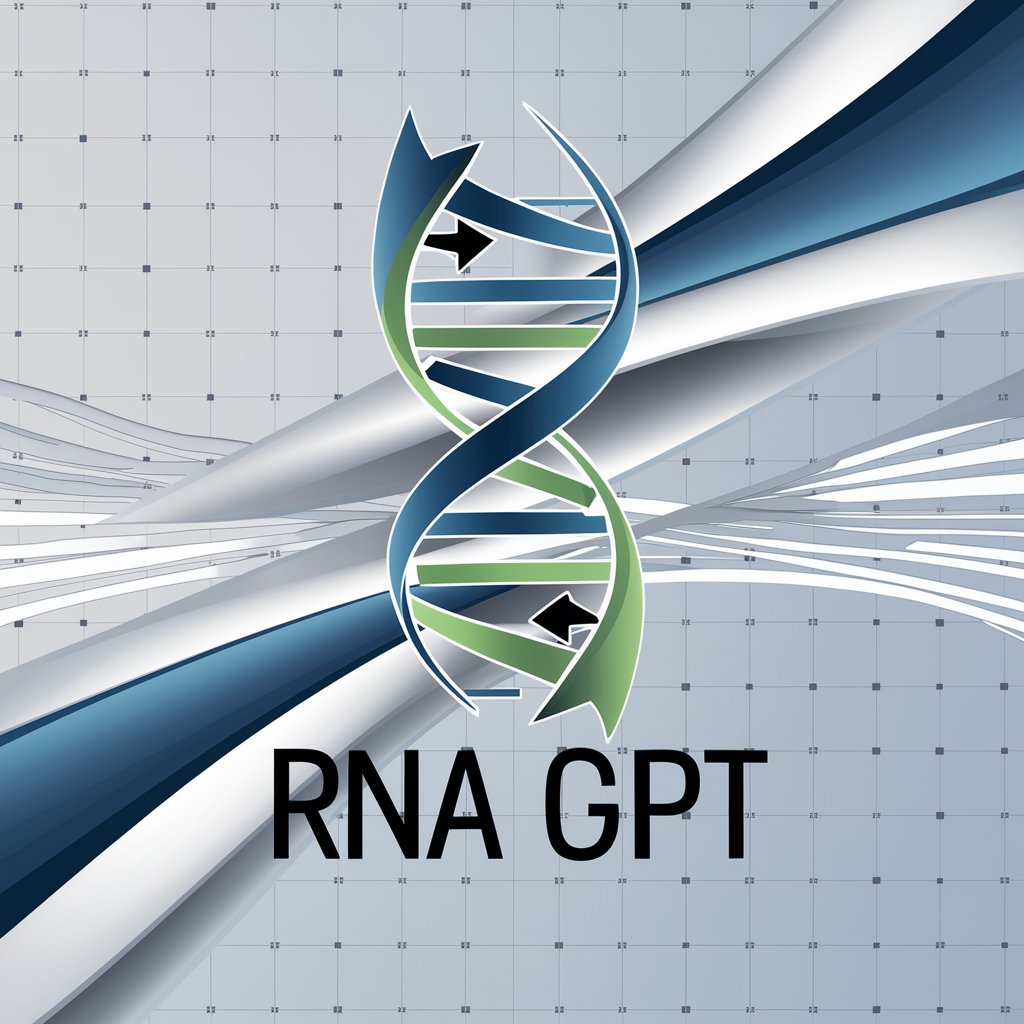
RNA - RNA Insight and Assistance

Hello! I'm here to help with all your molecular biology questions about RNA.
Unlocking RNA's potential with AI
Explain the structure and function of RNA in protein synthesis.
Describe the differences between RNA and DNA.
How does RNA interference (RNAi) work in gene regulation?
What are the types of RNA and their respective roles in the cell?
Get Embed Code
Introduction to RNA
Ribonucleic Acid (RNA) is a pivotal molecule in cellular biology, playing crucial roles in the coding, decoding, regulation, and expression of genes. Unlike DNA, which serves as the long-term storage of genetic information, RNA acts as the intermediary, converting the genetic instructions into proteins that perform various functions within the organism. RNA is composed of a single strand of nucleotides, which includes adenine (A), cytosine (C), guanine (G), and uracil (U), the latter distinguishing it from DNA's thymine (T). There are several types of RNA, each with distinct functions, including messenger RNA (mRNA), transfer RNA (tRNA), and ribosomal RNA (rRNA). An example scenario illustrating RNA's role is the process of protein synthesis. Here, mRNA carries the genetic code from DNA to the ribosomes, where rRNA helps form the site of protein assembly, and tRNA brings the appropriate amino acids to build the protein, based on the sequence encoded by the mRNA. Powered by ChatGPT-4o。

Main Functions of RNA
Protein Synthesis
Example
mRNA translation
Scenario
In the synthesis of proteins, mRNA is transcribed from a DNA template. This mRNA then travels from the nucleus to a ribosome, where it serves as a template for assembling a specific protein, guided by the sequence of codons it contains.
Regulation of Gene Expression
Example
microRNAs (miRNAs)
Scenario
miRNAs are small RNA molecules that do not code for proteins but are involved in post-transcriptional regulation of gene expression. They bind to complementary sequences on mRNA molecules, leading to mRNA degradation or inhibition of translation, thereby regulating the levels of proteins produced.
Genetic Information Transfer
Example
mRNA in gene therapy
Scenario
In gene therapy applications, synthetic mRNA can be designed to express a particular protein that is deficient or dysfunctional in patients. This mRNA is introduced into the patient's cells, directing the synthesis of the therapeutic protein, thereby treating the underlying condition.
Ideal Users of RNA Services
Biomedical Researchers
Researchers focusing on understanding cellular processes, disease mechanisms, or developing gene therapies greatly benefit from studying RNA. Their work often involves analyzing RNA sequences, expression patterns, and its role in gene regulation to uncover new insights into health and disease.
Pharmaceutical Companies
Pharmaceutical companies leverage RNA-based technologies for drug discovery and development, including mRNA vaccines and RNA interference (RNAi) therapies. The ability to target specific genes or proteins offers a powerful approach to treating a wide range of diseases, from cancer to genetic disorders.
Educators and Students
In the field of molecular biology, educators and students benefit from understanding RNA's roles and mechanisms as part of their broader educational curriculum. This foundational knowledge is crucial for fostering the next generation of scientists and researchers.

How to Utilize RNA: A Guide
Start Your Journey
Begin by exploring yeschat.ai for a hassle-free trial, requiring no login or subscription to ChatGPT Plus.
Identify Your Needs
Determine the specific area of molecular biology or RNA-related information you need assistance with, such as protein synthesis, RNA sequencing, or RNA interference.
Engage with RNA
Use specific queries to interact with RNA, providing clear, concise questions or topics for the most accurate and informative responses.
Apply the Information
Utilize the insights and data provided by RNA in your academic research, laboratory experiments, or biotechnology projects for enhanced understanding and innovation.
Review and Iterate
Reflect on the information received, and don't hesitate to ask follow-up questions or seek clarification to ensure comprehensive understanding and application.
Try other advanced and practical GPTs
Actor/Comedian Bio Helper
Discover the stories behind the laughter.

Blog Bytebio IA
Empowering Content with AI Insights

Author Bio (E-E-A-T)
Craft Your Credibility with AI

Face Swap - Remaker FaceVary
AI-Powered Face Swapping Made Simple

Darsteller Bio GPT
Craft captivating actor biographies with AI

Reptiles
Explore the reptilian world with AI

Tech Sales - Company Reports
Empowering Decision-Making with AI-Powered Company Reports

Festival Room Counter
AI-Powered Festival Accommodation Analysis

B2B Exporting Manager
AI-powered global B2B market expansion

Etsy POD Trends Adviser
Unlock Etsy Success with AI-Driven Insights

Store Merchandising
Revolutionizing Retail with AI

CTABot
Crafting Calls-to-Action with AI

Detailed Q&A on RNA
What is the role of RNA in protein synthesis?
RNA plays a critical role in protein synthesis through its involvement in transcription and translation processes. Messenger RNA (mRNA) carries genetic information from DNA to ribosomes, where transfer RNA (tRNA) helps decode mRNA sequences into amino acids, and ribosomal RNA (rRNA) forms the core of ribosomes and catalyzes protein synthesis.
How does RNA differ from DNA?
RNA differs from DNA in several key aspects: RNA contains ribose sugar, whereas DNA contains deoxyribose; RNA uses uracil instead of thymine found in DNA; RNA is single-stranded, allowing it to fold into complex structures, unlike the double-stranded helix of DNA. These differences enable RNA to function in diverse roles within the cell.
What are the types of RNA and their functions?
The main types of RNA are messenger RNA (mRNA), transfer RNA (tRNA), and ribosomal RNA (rRNA). mRNA carries genetic information from DNA to ribosomes, tRNA transports amino acids to ribosomes for protein synthesis, and rRNA forms the core of ribosomes and catalyzes peptide bond formation. Other types include microRNA (miRNA) and small interfering RNA (siRNA), which are involved in gene regulation and RNA interference.
How is RNA used in genetic engineering?
RNA is used in genetic engineering for gene editing, gene expression studies, and the development of RNA-based therapies. Techniques such as RNA interference (RNAi) and CRISPR-Cas9-mediated gene editing utilize RNA molecules to silence genes or introduce specific mutations, enabling researchers to study gene functions and develop treatments for genetic diseases.
Can RNA be used for therapeutic purposes?
Yes, RNA has significant therapeutic potential, particularly in the form of mRNA vaccines, RNA interference (RNAi) therapies, and antisense oligonucleotides. mRNA vaccines have been crucial in combating infectious diseases, while RNAi and antisense oligonucleotides offer targeted approaches for silencing harmful genes in conditions like cancer and genetic disorders.





